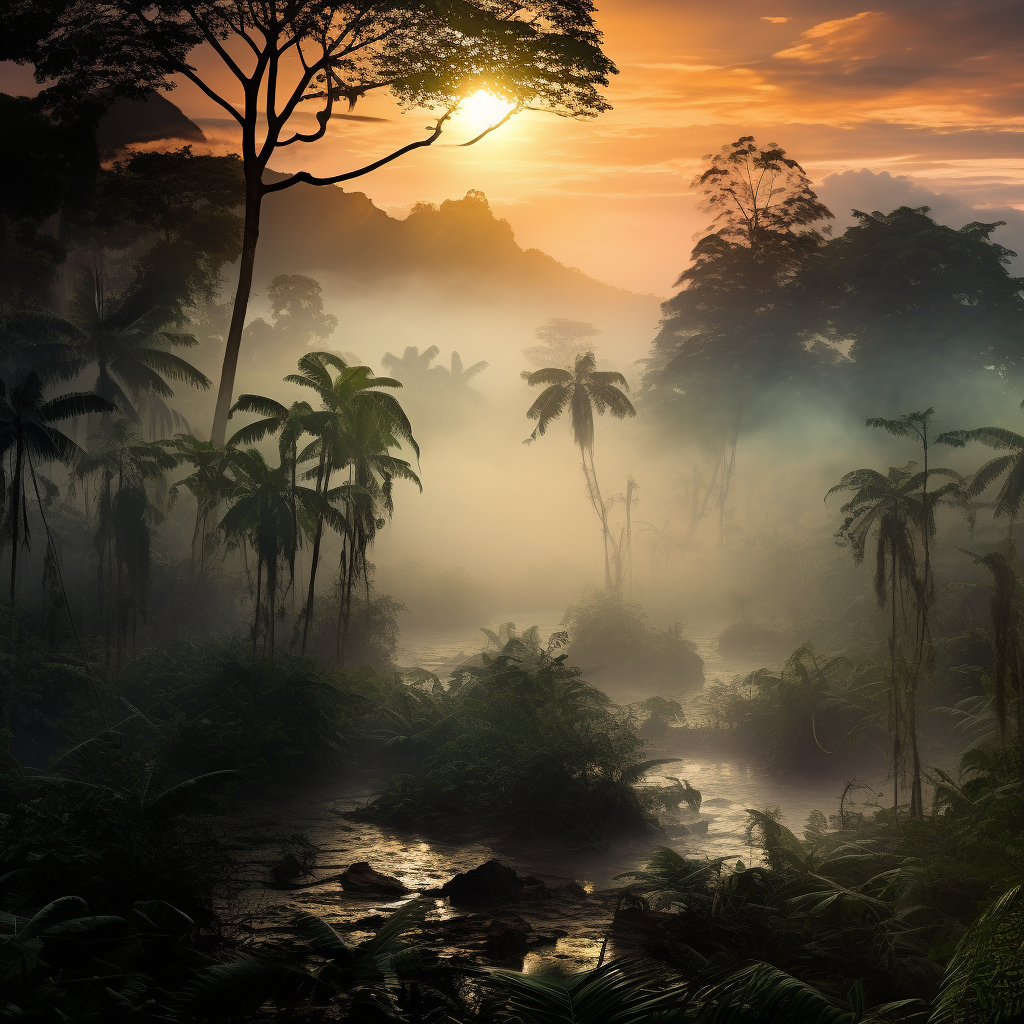DESIGN FICTION: Forest Fraud
DESIGN FICTION: FOREST FRAUD
Guinea Bissau, 2047
How can a forest disappear?
Well, it could be cut down, and we have no shortage of that in our illustrious history. But forest-clearing leaves a trace; forests don't just vanish. Forests are either burned or they're cut; both leave obvious evidence at the time. Those forest fingerprints persist for decades afterwards. Burning wood turns to ash that becomes massaged into the soil and river systems over time. Today, the wildfires that wracked the Australian east coast in the 2020s are still there to read in the soil. Similarly, when large forests are cut or cleared, they inevitably leave behind pockets of flora in the soil. Tree seeds are hardy and cunning. Buried, they lie dormant, waiting for their inevitable climb up into the light. A forest can be cleared but some of it stays buried beneath the ground. Thankfully. Waiting for its moment to resurface; waiting for humanity to let its guard down. Just look at the rewilding efforts of Gorongosa, Caledonia, Harapan or the abandoned hinterland of Chernobyl.
Forests can be killed, but they cannot disappear.
And yet, that's exactly what happened in Jabicunda a tropical rainforest west of Guinea Bissau border with Guinea. Long touted by BioKeep as a local biodiversity Library of Alexandria, the forest no longer is. And with it, that library of life has vanished too. GaiaMetrics, the de facto data hub for biodiversity data, estimates that Jabicunda contained 50,000 unique species of plants and animals and a further 367,000 unique fungi, bacteria and protozoa. We instantly lost 1.6% of global biodiversity. Just like that.
But the tale gets weirder still. If you travel to Jabicunda what you find is a series of rural villages, some farmland and small pockets of rainforest. In other words an area with no forest, an area with no clearing, an area with no new build on it. So the forest never existed. Mystery solved.
Speaking to some locals, they don't know what you talk about when you mention the Jabicunda forest. Some think you're crazy, or naive. There's no forest here, never was.
So an admin error, or mistranslation - these things have been known to happen. Especially with rare, local dialects disconnected from the metropolitan administrative centres. Or outright fraud designed to bring needed funding to what is otherwise an impoverished rural corner of Africa. Also not unheard of. An elaborate lie to feed the families. With so much wealth flooding into conservation and biodiversity research and so little work elsewhere, a bit of fraud sounds not just plausible but inevitable.
Except other locals say exactly the opposite.
The forest was here, one time and its legacy is tattooed into the local culture. Literally. There are tattoos here of Lesser White-spotted Flufftail, Crested Blue-bellied Roller and Latastia ornata lizard. Birds and animals that only ever existed in this part of the world.
Animals, without the forest, are extinct. Yet the body art is striking and obviously based on reality. They are not mythological creatures or fanciful drawings. They are anatomically accurate - as much as a tattoo could be. And they are widespread; approximately one in three people in Jabicunda town on the edges of the 'disappeared forest' have these tattoos or ones like them.
And its not just skin-art. The place names of this corner of Cacine in the Tombali region hark back to the forest days.
Many people have names that include - bu, ma and ri - Biafada words that have their origins in the forest. So perhaps the forest was here, once upon a time, say in the early 20th century and the culture is sufficiently self-sustaining with its language and practice that the memory lives on. And perhaps the elders recall the forest, or its remnants, or remember their parents speaking of it. Fair enough.
But it's not simple as that. There are photographs of the forest and of a sub-species of the Latastia Ornata lizard that do not exist elsewhere. And some of these have been genetically sequenced. Or so it seems. The investigative team have examined these in detail and are adamant that a human could not create these genetic profiles as pure fiction. They are convinced this couldn't be the work of AI either. That claim has been corroborated by InterAI - neither the images, the videos nor the sequences bear any of the hallmark errors and pockmarks of AI generation; nor the watermarks put there by the algorithms.
Except the locals don't agree.
Mawri Fada tells a very different story. The forest was here until last year, and one day we all woke up and it was gone. Spirited away. The ravings of a madman or a chancer.
Except he's not alone in thinking this, and telling us. Even children, with no obvious incentive to lie say the very same thing. Not only that, they refer to areas and daily practices that describe the forest. Be careful over there - there's a Wawri, a poisonous frog. Leptopelis pumilio . Without the forest, extinct.
How and why could this happen? The shaman says it's punishment. Punishment for angering the spirits of the forest. For taking them for granted and believing we could live without them. Punishment for letting the Kalo Ri fade away. This, a mystery within the mystery. The Kalo Ri was an animal revered in the culture of the region. Even when the forest was said to exist, it was endangered and declining.
When we put this theory to those who had said the forest was never here, a deathly silence descends.
"We must not talk of that. We too don't want to disappear."

